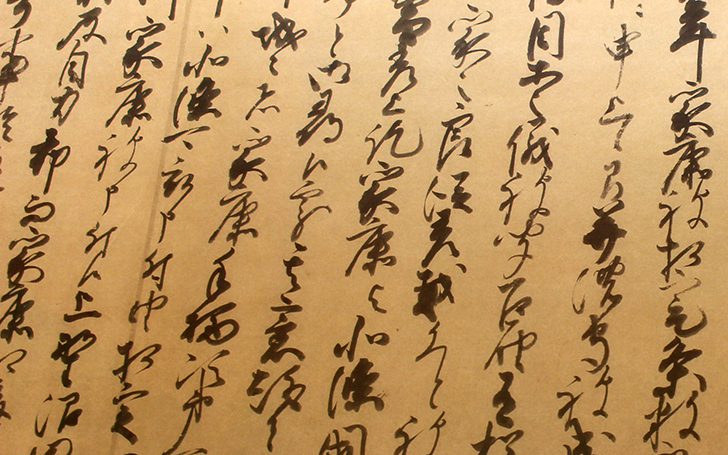53英語で説明したい日本1和歌、短歌

日本語訳載せときます。
和歌・短歌
和歌と短歌はどちらも「5・7・5・7・7」の31音からなる、日本語で書かれた歌です。
和歌と短歌の違いは詠まれた時期です。江戸時代までに読まれたものが和歌であり、明治時代以降は短歌として区別しています。
和歌の始まりは、スサノオノミコトが妻を迎え新居をたてるときに詠んだものが和歌の始まりといわれています。
この当時の和歌は実際に声に出してうたうためのものであったため、独特のリズムが必要でした。今のような57577調が主流になったのは平安時代です。奈良時代から鎌倉時代にかけて万葉集、古今和歌集、新古今和歌集といった日本を代表する和歌集が編纂されています。
明治以降に近代短歌が盛んになりました。題材は恋の歌が多かった和歌と比べ、情景や日常に忠実なのが短歌です。また和歌が重視していた修辞も否定されています。
万葉集などの和歌、明治以降の与謝野晶子や石川啄木の短歌、現代の俵万智さん等の短歌は英語でも読むことが出来ます。
イノウエ-スミスユキコさんの本のように英語で短歌を作ってみるのもいいかもしれません。和歌・短歌を楽しんで下さい。
作ったタイピングゲームの一覧はこちらです。
https://typing.twi1.me/profile/userId/113751
あとブログのURLは下記に。関連記事と動画があるのでよろしければご覧下さい。英語ニュース以外もあります。
http://okakyutaro.blog.fc2.com/
| 順位 | 名前 | スコア | 称号 | 打鍵/秒 | 正誤率 | 時間(秒) | 打鍵数 | ミス | 問題 | 日付 |
|---|---|---|---|---|---|---|---|---|---|---|
| 1 | りく | 4914 | B | 5.1 | 96.0% | 239.3 | 1226 | 50 | 19 | 2025/11/18 |
関連タイピング
-
めっちゃいい曲....
プレイ回数2.7万歌詞かな200打 -
タイピングに慣れてきた人におすすめ
プレイ回数111万長文かな1008打 -
プレイ回数256歌詞かな1500打
-
NON STOP HANA
プレイ回数110歌詞1488打 -
オーバーライド 重音テト
プレイ回数16万歌詞かな208打 -
簡単な短文タイピングです。
プレイ回数18万かな60秒 -
テトリスサビ!!!!!!!!!!!!!!!!!!
プレイ回数13万歌詞かな167打 -
何秒で全部打てるか挑戦してみよう!
プレイ回数433万短文かな298打
問題文
(Waka and Tanka)
Waka and Tanka
(Both waka and tanka are songs written in Japanese that consist of 31 syllables, "5-7-5-7-7".)
Both waka and tanka are songs written in Japanese that consist of 31 syllables, "5-7-5-7-7".
(The difference between waka and tanka is when they were composed.)
The difference between waka and tanka is when they were composed.
(Waka was the one that was read by the Edo period,)
Waka was the one that was read by the Edo period,
(and since the Meiji period it has been distinguished as tanka.)
and since the Meiji period it has been distinguished as tanka.
(It is said that the beginning of waka poems was composed by Susanoo no Mikoto)
It is said that the beginning of waka poems was composed by Susanoo no Mikoto
(when he married his wife and built a new house.)
when he married his wife and built a new house.
(Waka poems at that time were meant to be sung aloud, so they needed a unique rhythm.)
Waka poems at that time were meant to be sung aloud, so they needed a unique rhythm.
(It was during the Heian period that the current 57577 style became mainstream.)
It was during the Heian period that the current 57577 style became mainstream.
(From the Nara period to the Kamakura period, Japan's representative waka anthologies)
From the Nara period to the Kamakura period, Japan's representative waka anthologies
(such as Manyoshu, Kokin Wakashu, and Shin Kokin Wakashu were compiled.)
such as Manyoshu, Kokin Wakashu, and Shin Kokin Wakashu were compiled.
(After the Meiji period, modern tanka became popular.)
After the Meiji period, modern tanka became popular.
(Compared to waka, whose subject matter is often about love,)
Compared to waka, whose subject matter is often about love,
(tanka is more faithful to scenes and everyday life.)
tanka is more faithful to scenes and everyday life.
(And tanka denies the rhetoric that waka emphasized.)
And tanka denies the rhetoric that waka emphasized.
(Waka poems such as Manyoshu, tanka poems by Akiko Yosano and Takuboku Ishikawa after the Meiji period,)
Waka poems such as Manyoshu, tanka poems by Akiko Yosano and Takuboku Ishikawa after the Meiji period,
(and modern tanka poems by Machi Tawara can be read in English.)
and modern tanka poems by Machi Tawara can be read in English.
(It might be a good idea to compose tanka in English, like some of Yukiko Inoue-Smith's books.)
It might be a good idea to compose tanka in English, like some of Yukiko Inoue-Smith's books.
(Please enjoy waka and tanka.)
Please enjoy waka and tanka.








